T1r3 taste receptor involvement in gustatory neural responses to ethanol and oral ethanol preference
- PMID: 20145204
- PMCID: PMC2869103
- DOI: 10.1152/physiolgenomics.00113.2009
T1r3 taste receptor involvement in gustatory neural responses to ethanol and oral ethanol preference
Abstract
Elevated alcohol consumption is associated with enhanced preference for sweet substances across species and may be mediated by oral alcohol-induced activation of neurobiological substrates for sweet taste. Here, we directly examined the contribution of the T1r3 receptor protein, important for sweet taste detection in mammals, to ethanol intake and preference and the neural processing of ethanol taste by measuring behavioral and central neurophysiological responses to oral alcohol in T1r3 receptor-deficient mice and their C57BL/6J background strain. T1r3 knockout and wild-type mice were tested in behavioral preference assays for long-term voluntary intake of a broad concentration range of ethanol, sucrose, and quinine. For neurophysiological experiments, separate groups of mice of each genotype were anesthetized, and taste responses to ethanol and stimuli of different taste qualities were electrophysiologically recorded from gustatory neurons in the nucleus of the solitary tract. Mice lacking the T1r3 receptor were behaviorally indifferent to alcohol (i.e., ∼50% preference values) at concentrations typically preferred by wild-type mice (5-15%). Central neural taste responses to ethanol in T1r3-deficient mice were significantly lower compared with C57BL/6J controls, a strain for which oral ethanol stimulation produced a concentration-dependent activation of sweet-responsive NTS gustatory neurons. An attenuated difference in ethanol preference between knockouts and controls at concentrations >15% indicated that other sensory and/or postingestive effects of ethanol compete with sweet taste input at high concentrations. As expected, T1r3 knockouts exhibited strongly suppressed behavioral and neural taste responses to sweeteners but did not differ from wild-type mice in responses to prototypic salt, acid, or bitter stimuli. These data implicate the T1r3 receptor in the sensory detection and transduction of ethanol taste.
Keywords: alcohol preference; knockout mice.
Figures
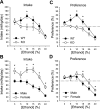

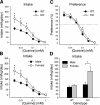
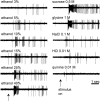
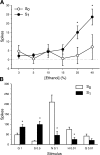
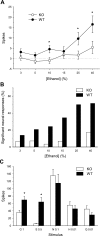
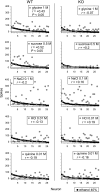
Similar articles
-
Contribution of the T1r3 taste receptor to the response properties of central gustatory neurons.J Neurophysiol. 2009 May;101(5):2459-71. doi: 10.1152/jn.90892.2008. Epub 2009 Mar 11. J Neurophysiol. 2009. PMID: 19279151 Free PMC article.
-
Strain differences in the neural, behavioral, and molecular correlates of sweet and salty taste in naive, ethanol- and sucrose-exposed P and NP rats.J Neurophysiol. 2011 Nov;106(5):2606-21. doi: 10.1152/jn.00196.2010. Epub 2011 Aug 17. J Neurophysiol. 2011. PMID: 21849614 Free PMC article.
-
Bitter and Sweet Diets Alter Taste Response and Alcohol Consumption Behavior in Mice.Nutrients. 2025 Feb 28;17(5):874. doi: 10.3390/nu17050874. Nutrients. 2025. PMID: 40077744 Free PMC article.
-
Chorda tympani responses in two inbred strains of mice with different taste preferences.Physiol Behav. 1999 Aug;67(2):287-97. doi: 10.1016/s0031-9384(99)00071-2. Physiol Behav. 1999. PMID: 10477061 Review.
-
Oral, post-oral and genetic interactions in sweet appetite.Physiol Behav. 2006 Nov 30;89(4):525-30. doi: 10.1016/j.physbeh.2006.03.021. Epub 2006 Apr 27. Physiol Behav. 2006. PMID: 16647093 Free PMC article. Review.
Cited by
-
Differential neural representation of oral ethanol by central taste-sensitive neurons in ethanol-preferring and genetically heterogeneous rats.J Neurophysiol. 2011 Dec;106(6):3145-56. doi: 10.1152/jn.00580.2011. Epub 2011 Sep 14. J Neurophysiol. 2011. PMID: 21918002 Free PMC article.
-
Using Animal Models to Determine the Role of Gustatory Neural Input in the Control of Ingestive Behavior and the Maintenance of Body Weight.Chemosens Percept. 2015 Aug;8(2):61-77. doi: 10.1007/s12078-015-9190-y. Epub 2015 Aug 13. Chemosens Percept. 2015. PMID: 26557212 Free PMC article.
-
Residual Glucose Taste in T1R3 Knockout but not TRPM5 Knockout Mice.Physiol Behav. 2020 Aug 1;222:112945. doi: 10.1016/j.physbeh.2020.112945. Epub 2020 May 15. Physiol Behav. 2020. PMID: 32417232 Free PMC article.
-
Sucrose-conditioned flavor preferences in sweet ageusic T1r3 and Calhm1 knockout mice.Physiol Behav. 2014 Mar 14;126:25-9. doi: 10.1016/j.physbeh.2013.12.003. Epub 2013 Dec 31. Physiol Behav. 2014. PMID: 24384370 Free PMC article.
-
Science on the Silk Road: Taste for adventure.Nature. 2012 Aug 16;488(7411):269-71. doi: 10.1038/488269a. Nature. 2012. PMID: 22895316 No abstract available.
References
-
- Belknap JK, Crabbe JC, Young ER. Voluntary consumption of ethanol in 15 inbred mouse strains. Psychopharmacology (Berl) 112: 503–510, 1993. - PubMed
Publication types
MeSH terms
Substances
Grants and funding
LinkOut - more resources
Full Text Sources
Research Materials

